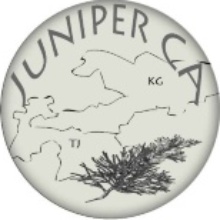Project Description
Technical Detail
| Project number | Projektnummer |
| Project lead ILPÖ | Dr. H.-G. Schwarz-v.Raumer |
| Contact person | Dr. H.-G. Schwarz-v.Raumer |
| Partnership country | Tadschikistan / Kirgistan |
| Project partner | |
| Funding organisation | BLE Forschung für internationale, nachhaltige Waldbewirtschaftung |
| Project duration | 01/03/2019 - 30/08/2022 |
Further Infos
Project name: Balancing and optimization of multifunctional use of juniper forests in Central Asia
Acronym: JuniperCA
Impression and News
News
Project funded within the framework of research for international sustainable forest management:
Performing more than 4,000 different species, the Pamiro-Alai system is one of the world's biodiversity hotspots. In this context, the forest ecosystems and within them the juniper forests, which dominate the mountain regions of Central Asia, play an outstanding role. Since the beginning of the 20th century, the proportion of wooded areas in Kyrgyzstan and Tajikistan has decreased dramatically. Even the remaining juniper forest fragments are not used sustainably. The forestry sectors of Kyrgyzstan and Tajikistan show a large number of structural problems that currently do not permit regulated forestry. Together with the local scientific partners in the target countries of Tajikistan and Kyrgyzstan and other implementation partners, the aim of the planned project is to improve the capacity of forest administrations and local stakeholders to act. Local actors will be enabled to sustainably use and preserve the juniper forest ecosystem. Within the project, a detailed investigation of two juniper forest systems and their use will be conducted in case studies (See Figure 1). The project partners will carry out a yield analysis of the forest ecosystems, a study of forest state and distribution based on satellite data, surveys of the local socioeconomic and cultural conditions of forest use and finally it builds up spatial simulations of forest use scenarios. The project consists of a network of two Central Asian and two German partners: the Climate, Water and Natural Resources Department of the Central Asian Institute for Applied Geosciences, (CAIAG), the Mountain Societies Research Institute of the University of Central Asia (MSRI), the Forest and Environment Faculty of the Eberswalde University of Applied Sciences (HNEE) and the Institute of Landscape Planning and Ecology of the University of Stuttgart (ILPÖ).
The project consists of a network of one Central Asian and two German partners: the Mountain Societies Research Institute of the University of Central Asia (MSRI), the Forest and Environment Faculty of the Eberswalde University of Applied Sciences (HNEE) and the Institute of Landscape Planning and Ecology of the University of Stuttgart (ILPÖ).
...............................................................................................................................................................................................






